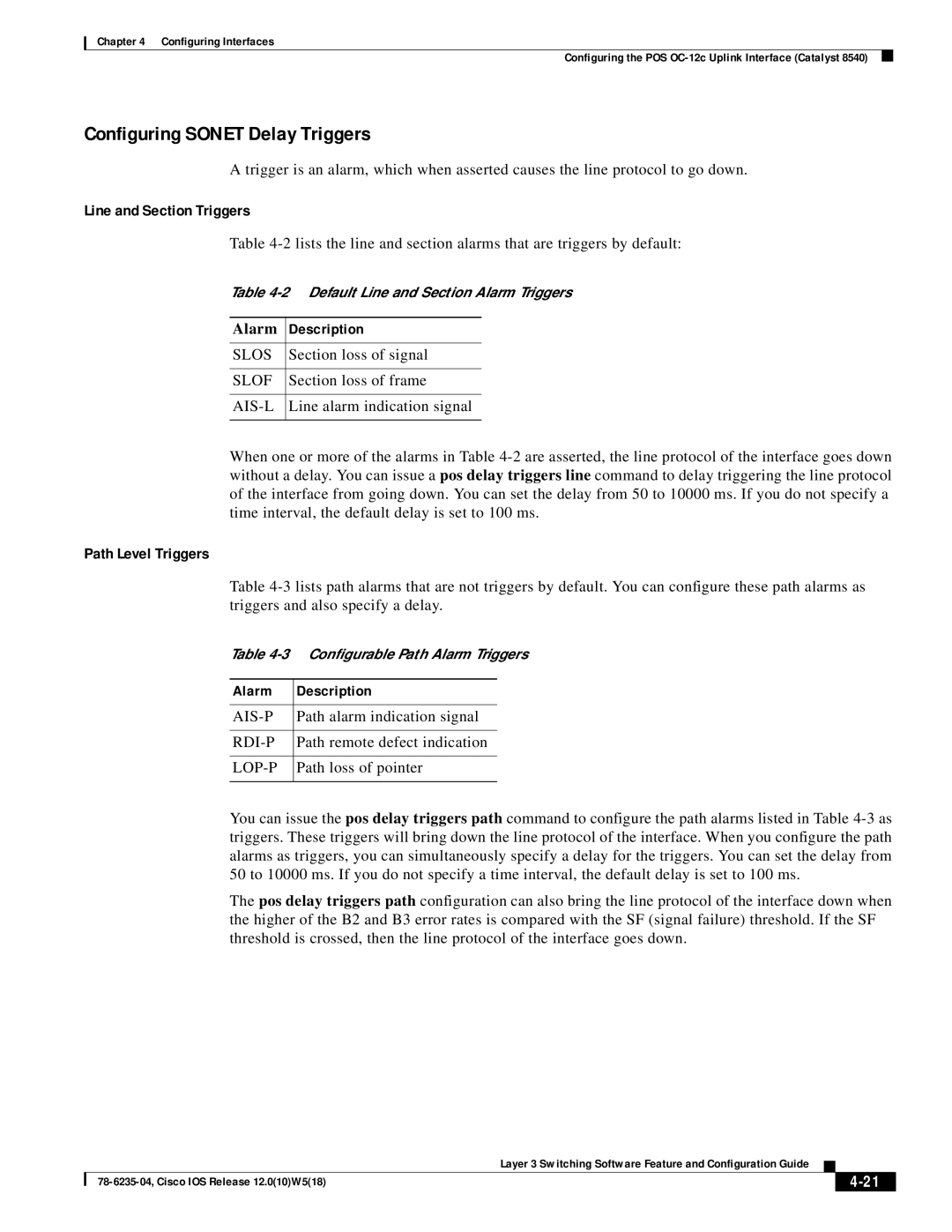Chapter 4 Configuring Interfaces
Configuring the POS OC-12c Uplink Interface (Catalyst 8540)
Configuring SONET Delay Triggers
A trigger is an alarm, which when asserted causes the line protocol to go down.
Line and Section Triggers
Table 4-2lists the line and section alarms that are triggers by default:
Table 4-2 Default Line and Section Alarm Triggers
Alarm | Description |
| |
SLOS | Section loss of signal |
| |
SLOF | Section loss of frame |
| |
AIS-L | Line alarm indication signal |
| |
When one or more of the alarms in Table 4-2are asserted, the line protocol of the interface goes down without a delay. You can issue a pos delay triggers line command to delay triggering the line protocol of the interface from going down. You can set the delay from 50 to 10000 ms. If you do not specify a time interval, the default delay is set to 100 ms.
Path Level Triggers
Table 4-3lists path alarms that are not triggers by default. You can configure these path alarms as triggers and also specify a delay.
Table 4-3 Configurable Path Alarm Triggers
Alarm | Description |
| |
AIS-P | Path alarm indication signal |
| |
RDI-P | Path remote defect indication |
| |
LOP-P | Path loss of pointer |
| |
You can issue the pos delay triggers path command to configure the path alarms listed in Table 4-3as triggers. These triggers will bring down the line protocol of the interface. When you configure the path alarms as triggers, you can simultaneously specify a delay for the triggers. You can set the delay from 50 to 10000 ms. If you do not specify a time interval, the default delay is set to 100 ms.
The pos delay triggers path configuration can also bring the line protocol of the interface down when the higher of the B2 and B3 error rates is compared with the SF (signal failure) threshold. If the SF threshold is crossed, then the line protocol of the interface goes down.
| | Layer 3 Switching Software Feature and Configuration Guide | | | |
| | |
| 78-6235-04, Cisco IOS Release 12.0(10)W5(18) | | | 4-21 | |
| | | |

